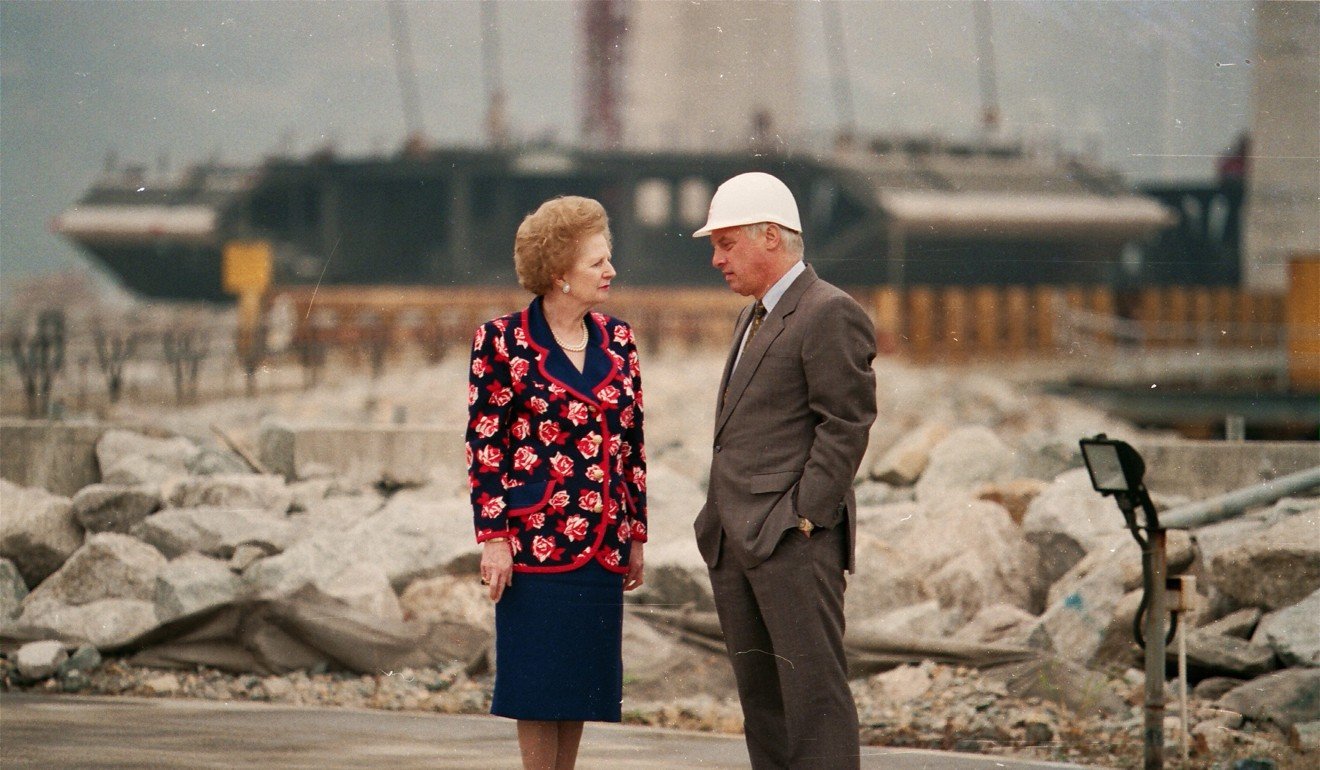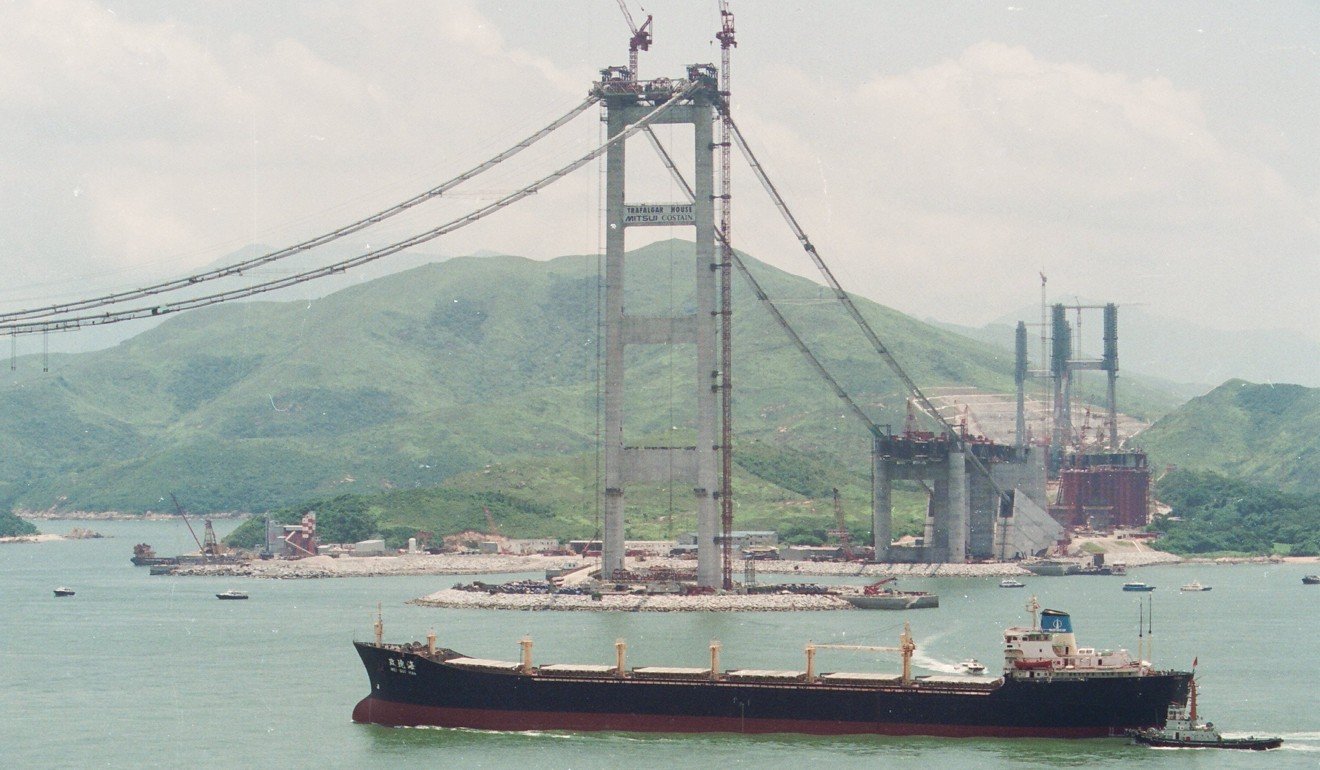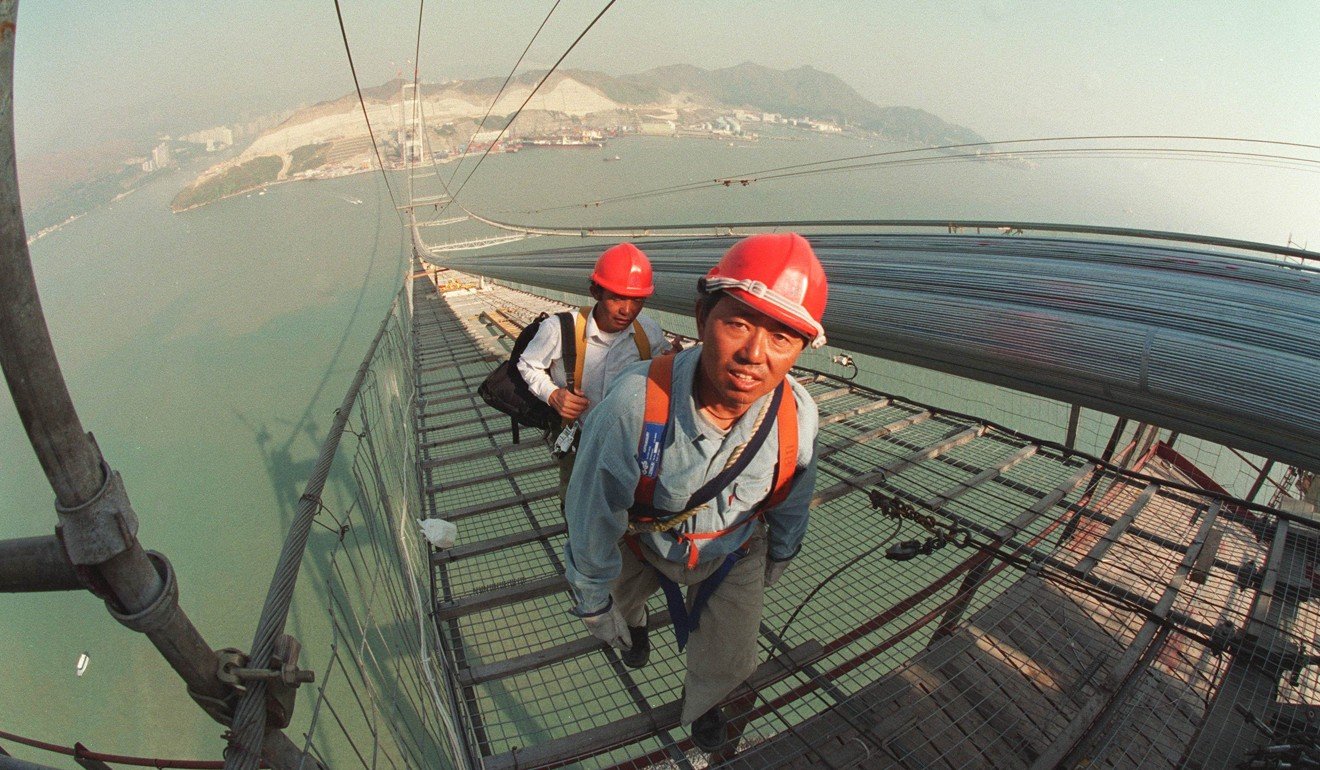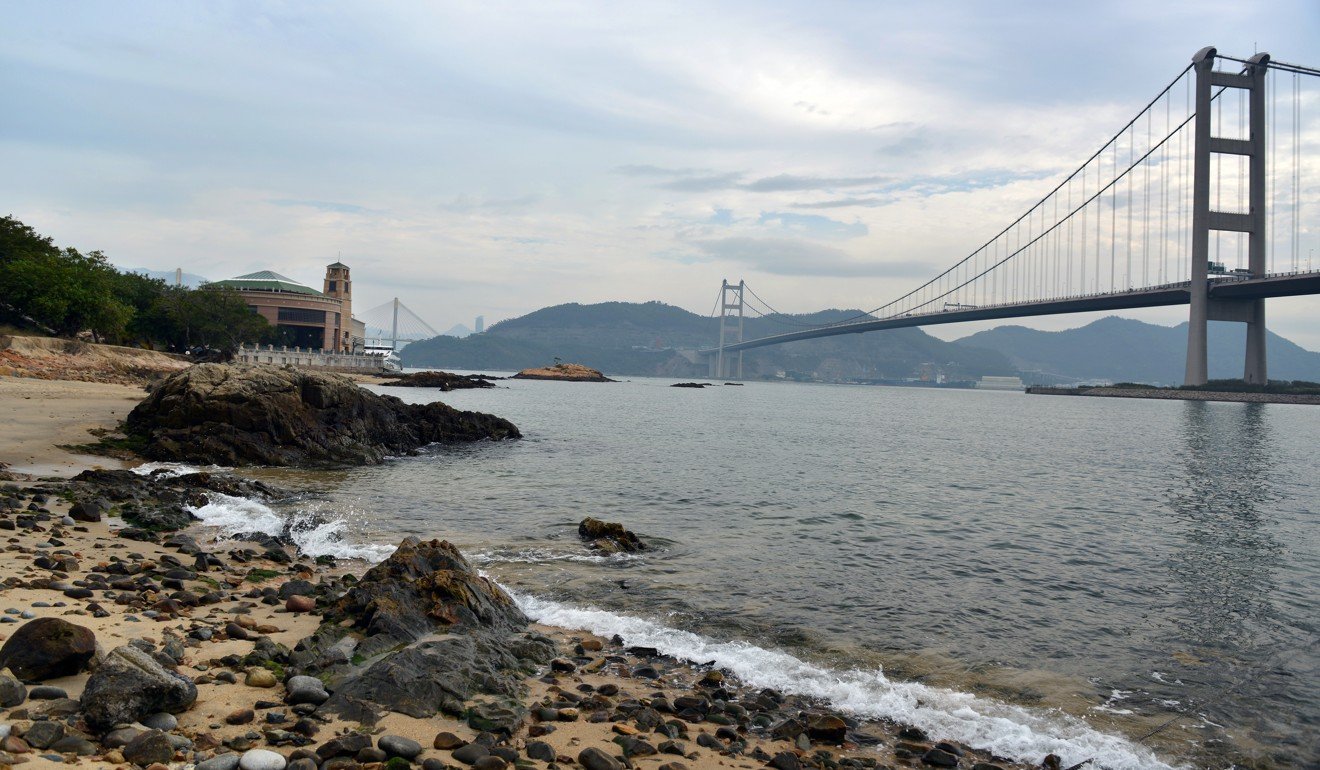
Tsing Ma Bridge height debacle costing Hong Kong billions
The bridge is eight metres higher than official records show, meaning mega-ships have been needlessly prohibited from using the Ma Wan channel for years. Seven months after the finding was revealed, nothing has been done
The bridge that was once an icon of Hong Kong’s engineering prowess and enterprising spirit is now the focus of a debacle that shipping industry leaders say is costing the city billions of dollars in lost revenue.
According to a special technical report dated November 1, 2016 and seen by the SCMP, the height of the Tsing Ma Bridge spanning the Ma Wan Channel is not what the government says it is. Detailed measurements reveal it is 8.1 metres higher than the official height of 62.1 metres – from base to road span – stated by the Highways Department.
This discrepancy has shocking economic implications for the city. It means that the biggest mega container ships have been prohibited from using the channel for years unnecessarily, despite repeated requests for relaxation of the height restriction rule on ships.
The Marine Department is responsible for the accuracy of the information on local charts and it is clearly incorrect
The same report, commissioned by the Hong Kong Liner Shipping Association and undertaken by maritime consultants BMT Asia-Pacific, calculates the financial impact caused by the error is huge. Hong Kong’s port will lose nearly 10 per cent of its throughput in 2017 if the issue is not resolved; in 2014 alone, the loss of one million TEUs (half-container equivalent units) of cargo cost the city HK$800 million and 2,000 jobs.
“It’s a billion-dollar balls-up,” was how one local shipping industry veteran described the situation, as normally restrained maritime professionals are quickly running out of patience.
Given the severe economic damage and the fact that the height restriction row has been rumbling away in shipping circles for more than five years, it might be assumed that the matter would now be urgently addressed. Yet, seven months after the report’s publication, there is no consensus on how high the bridge really is, or who should measure it, and the situation appears to be descending from confusion into farce.
“I can check the exact height of every bridge in the port of Hamburg on my smartphone, but in Hong Kong it is not quite so easy,” says one senior Hong Kong pilot and experienced master mariner, who requested anonymity.

When the bridge was constructed, there was plenty of room for even the largest container ship to pass comfortably within the 53-metre safe height restriction shown on local charts, and few shipping industry professionals could have envisaged the rapid development of increasingly larger ships.
“About eight years ago, 10,000 TEU ships were introduced to Hong Kong and these typically have an air draft [height above the waterline] of 53 metres to 55 metres,” says Captain Marso P.K. Law, an experienced pilot and master mariner.

The growing size of container vessels was potentially disastrous for shipping lines, which would have to detour ships away from Hong Kong. It was bad news for Hong Kong’s port, but also others in the Pearl River Delta. About 20 to 25 per cent of all ships arriving at the busy Kwai Tsing container port approach from the north, so have to pass under the bridge. Although the port can be entered from the south, departing ships must pass the bridge to connect with Pearl River ports. This is essential because of Hong Kong’s role as a transshipment port.
“The maximum size of ship we can get through the bridge is 55.4 metres [air draft] or 14,000 TEU,” says Law, explaining that this requires special permission from the Marine Department, and is viable during low tide and when ships are heavily loaded.
The biggest ships wanting to connect with Hong Kong are now 18,000 TEU and over, with a typical air draft of about 58.2 metres.
And it’s not just container ships. The first Asian-owned luxury cruise liner, Genting Dream, cannot travel under the bridge because of the height restriction.
A legally imposed safety margin of nine metres was suggested by the Marine Department when the bridge opened in 1997. Many experienced mariners think that in the days of millimetric accuracy, GPS and digital depth sounders, allowing for a margin of error greater than the maximum height of a typical village house (8.23 metres) is cautious in the extreme. The safety margins for bridges spanning navigable waterways in China are two metres or four metres, depending on their location.
“This was a safety margin promulgated in the early days of the bridge when no one would have imagined it would ever be needed and it allowed for every eventuality from typhoon or earthquake,” Lo says.

Last month, Tim Smith, chairman of Maersk China, told the Hong Kong Maritime Hub that because these big vessels need to make multiple port calls to fill up with cargo, it was “less efficient to deploy larger vessels on rotations involving Hong Kong with other west Pearl River Delta ports”.
Not surprisingly, some in shipping circles are growing worried.
“Those shipping lines are our customers and if they reach a point where they decide to avoid Hong Kong that would be very bad news for the port, and the thousands employed in the ports and logistics sector,” says Jessie Chung Wai-yin, chairwoman of the Hong Kong Container Terminal Operators Association.
Despite being aware of the new report, the Marine Department, which has its own experienced hydrographic surveyors, would not survey the bridge to confirm the true height, because they felt it was a Highways Department problem, insiders say.
“When reclamation reduced the size of Victoria Harbour and affected shipping, I can’t believe the Marine Department did not survey it themselves but sat and waited for the Lands Department to hand over the information,” says Martin Cresswell, technical director of the Hong Kong Shipowners Association. “The Marine Department is responsible for the accuracy of the information on local charts and it is clearly incorrect,” he says.

In an e-mail response to queries from the SCMP, the Marine Department says it is working with the
Transport and Housing Bureau and the Highways Department on the air draft restriction issue, “having regard to the concerns raised by the industry”.
“The relevant government bureau and departments are sorting out the various implications with a view to coming up with some possible improvement measures. Once ready, the Transport and Housing Bureau will consult the industry through the Maritime and Port Development Committee under the Hong Kong Maritime and Port Board,” it says.
The BMT report also recommended fitting modern microwave range sensors to the Tsing Ma Bridge so that real-time height measurement could be relayed automatically to ship captains and pilots as they approached the bridge, as is common procedure in many German and American ports.
“The port has invested heavily in ensuring they can handle the new generation of mega vessels, so if they can’t come because of an artificial bridge height restriction that’s not good news,” says Cresswell. He suspects it may be bureaucratic paranoia following a case on October 23, 2015, when a barge hit the base of Kap Shui Mun Bridge.
The accident provoked public outrage when access to the airport was temporarily halted. So, insiders say, no one in the government wants to be responsible for relaxing a rule relevant to maritime safety however overwhelming and obvious the case.

